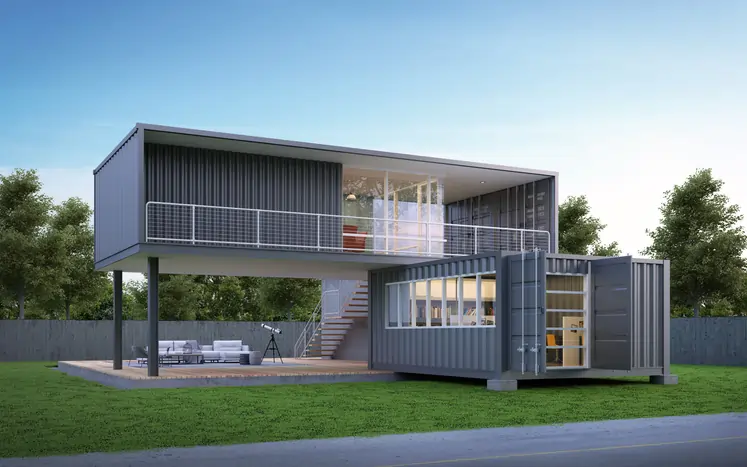
As property prices continue to climb in the UK, more and more people are seeking alternative housing. A solution gaining significant traction is repurposing shipping containers into homes — offering affordability, sustainability, and unique architectural appeal.
Google Trends reveals a significant surge in interest for ‘Shipping Container Homes,’ with 87,000 searches already in 2024 following 238,000 searches in 2023. This growing curiosity underscores the rising appeal of shipping container homes.
“After conducting extensive research into the rise in Google searches for these keywords, we aimed to delve into the reasons behind the increasing popularity of shipping container homes,” explains Ellie Laws, Chartered Town Planner at Planning By Design. “We examined their impact on the planning and permissions sector, including planning permission consultants and architectural planning experts, and discussed the trend’s benefits and challenges. Additionally, we highlight exemplary cases of shipping container homes across the UK to provide a comprehensive overview of their practical applications and potential.”
Why Are Shipping Container Homes on the Rise?
Shipping container homes are increasingly popular in the UK due to their affordability, sustainability, and quick construction. The versatility of shipping containers allows for customisation to fit individual design and space needs. Owners can add windows, doors, and even combine multiple containers to create larger spaces. This flexibility allows for highly personalised living spaces that traditional homes might not offer without significant expense. Additionally, this adaptability makes them ideal for urban development projects and attractive to those who appreciate modern architectural aesthetics.
“The use of shipping containers as a solution to the UK housing crisis is an obvious choice,” says Ellie Laws. “In 2022/23, 212,570 new homes were built, slightly up from the previous year’s 211,670, but significantly below the government’s target of 300,000 new homes per year. The speed of traditional home construction is a factor, alongside post-Brexit labor costs and material price increases due to the war in Ukraine.”
Speed and Efficiency
In traditional builds, smaller sites take longer to deliver the first home after planning approval, with an average of 18 months. “The benefits of ready-to-go, fitted-out units, which can be craned into place in a matter of hours, are self-evident,” Laws notes. “Post-WWII, the UK saw the success of prefabricated homes under the Housing (Temporary Accommodation) Act 1944, with 1.2 million new homes built between 1945 and 1951. Modern container homes far exceed and outperform their predecessors.”
Economic Factors Driving the Shift
Home prices in the UK continue to rise, reflecting broader economic trends and market pressures. According to Halifax, the average house price in April 2023 was £288,949, a modest increase from the previous month and a 1.1% rise year-over-year. In regions like London and the Southeast, prices are considerably higher, worsening affordability issues for many potential homeowners.
In contrast, acquiring a used shipping container costs between £1,500 and £3,000, with conversion costs ranging from £10,000 to £50,000 depending on design complexity and finish quality. This price range makes container homes a viable, cost-effective alternative, especially for first-time buyers or those with limited budgets.
Impact on the Planning Permission Industry
The growing interest in shipping container homes in the UK has significant implications for industry professionals, especially those within planning and development. The unique nature of container homes presents both opportunities and challenges for planning permission processes, urban development strategies, and regulatory frameworks.
“Regions like London are leading the way in adopting container living and working solutions,” says Ellie Laws. “Other areas, such as Cheltenham and Bristol, are also embracing these structures for various uses, including residential, commercial, and innovative urban projects.”
The rise of shipping container homes addresses the need for affordable and sustainable housing but also faces regulatory and perception challenges. Improving regulatory frameworks, enhancing design standards, and shifting public perceptions are essential for the broader acceptance of container homes as a mainstream housing solution.
Ellie Laws concludes, “With a focus on brownfield development and innovative solutions, shipping container homes represent a modern approach to addressing the UK’s housing crisis. As more people recognise their potential, we can expect to see continued growth and acceptance of this creative housing solution.”
For further insights into shipping container living, explore the detailed information provided in our latest blog post: https://planning-by-design.co.uk/shipping-container-living-a-creative-solution-for-todays-housing-crisis/


